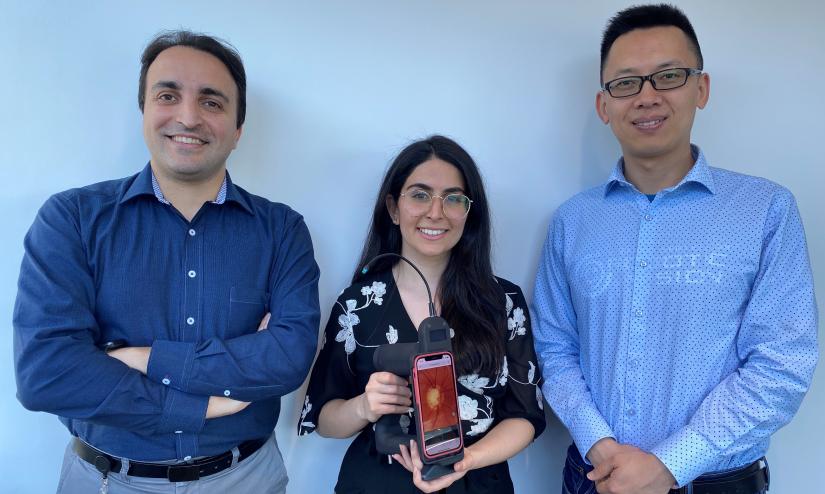Sharp eye for research translation
An Australian-first technology for smarter diagnosis of abnormal brain pressure is one of three to win a UTS prize to encourage research translation.

The A-Eye team (L to R): Dr Mojtaba Golzan, Sahar Shariflou and Dr Xin Yu. Photo Karin Goebl.
A UTS cross-disciplinary team have developed A-Eye, an all-in-one technology package that harnesses the power of artificial intelligence in combination with images obtained from the natural window to the brain and eyes.
A-Eye improves the accuracy and reduces the invasiveness of the diagnostic procedure used to assess intracranial pressure. It won the first prize of $30,000 in the Research Translation Competition 2021.
“With more than one million invasive intracranial pressure measurements performed each year around the world, finding a way to make diagnostic assessment less painful will have a big impact on patient outcomes,” says project lead Dr Mojtaba Golzan, Senior Research Fellow in the Faculty of Health.
“We already have the hardware developed through UTS Rapido, and are in the process of integrating the software, funded by a grant from Google earlier this year, into a clinical-ready mobile app. This prize will help us to continue to work with our industry partners to take our exciting new technology to market.”
The three research teams have great scientific ideas, seen their potential, created new technologies and are finding pathways to market for them
Professor Kate McGrath, Deputy Vice-Chancellor (Research)
Second prize of $20,000 was won by the Algae Catcher team led by Dr Luong Nguyen, whose technology can be employed on algal farms to isolate the algae biomass which can be turned into biofuel or fertiliser..
Third prize of $10,000 went to the MicroLampDx technology that can detect the pathogens that cause bovine mastitis in cows, a disease that costs the dairy industry around $42 billion in losses every year globally.
Deputy Vice-Chancellor (Research), Professor Kate McGrath, congratulated all three teams winning the Research Translation Competition on their breakthrough technologies and entrepreneurial spirit.
"The three research teams have great scientific ideas, seen their potential, created new technologies and are finding pathways to market for them. Congratulations to all three outstanding teams for capturing the essence of our research translation agenda,” she says.
